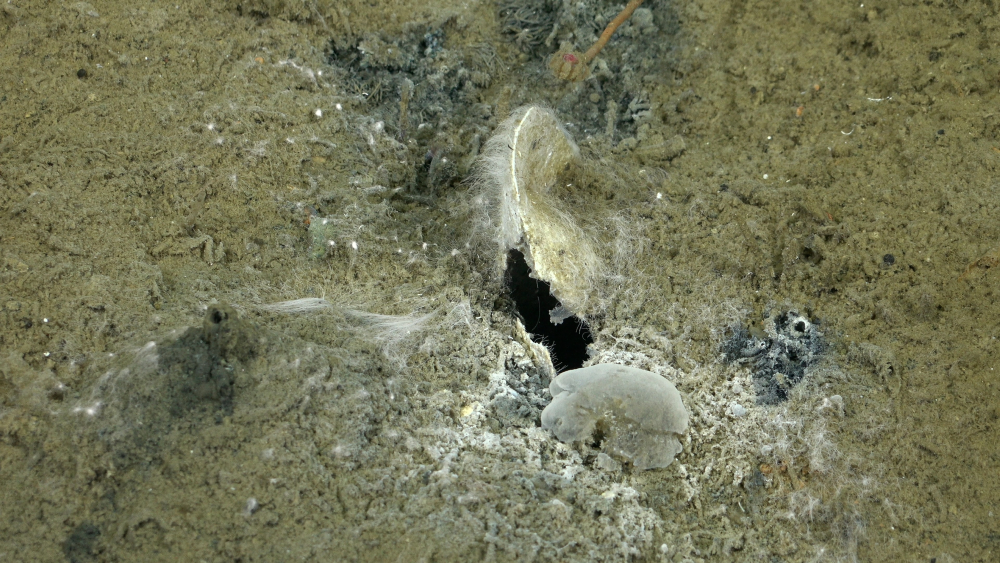An almighty discovery has been made during an expedition in the Atacama Trench, an 8,000-meter-deep formation that stretches along the length of Peru and Chile. Here, Scientists on a research expedition onboard Schmidt Ocean Institute’s R/V Falkor (too) found Chile’s deepest and northernmost cold seeps at a depth of 2,836 meters (9,304 feet).
Cold seeps are areas where hydrocarbons like methane form bubbles along the ocean floor. They get harder to find the deeper you go, and locating these record-breaking seeps took over 12 hours using seafloor mapping data.
All evidence points to them being methane seeps, a phenomenon known to occur along subduction zones where two tectonic plates are colliding pushing one under the other – just like the Cascadia Subduction Zone that’s leaking lubricant in a very strange way. The methane can be a great resource for deep-sea animals like clams, squat lobsters, and tube worms, as it feeds the bacteria that make up some of their diet.

A methane seep documented on the seafloor during Dive 681.
“The microbes that live on these seeps have amazing strategies for producing food without sunlight,” said expedition lead Dr Lauren Seyler of Stockton University, New Jersey, in a statement emailed to IFLScience.
“Here on Earth, life in the dark is alien in its own right and provides critical information for understanding how organisms persist under the most extreme conditions. We are still trying to figure out how life started on Earth, and environments that provide chemical energy for life, like this one, might offer clues about the spark that ignited all the biodiversity on our beautiful planet.”
The bacteria are crucial because sunlight can’t reach this deep, making these critters of great interest to astrobiologists trying to work out how life could evolve in extraterrestrial habitats that don’t meet our established criteria for what life needs to thrive.

A deep-sea lizardfish documented on the seafloor during Dive 691.
“The Atacama Desert is a well-known Mars analog model here on Earth. It contains precious insights for how life, if it ever arose on Mars, might be able to adapt to an increasingly drying plane,” said Dr Armando Azua-Bustos of Centro de Astrobiología (CAB, CSIC-INTA).
“We hope the information we gathered from the Atacama trench, with help from the Schmidt Ocean Institute, will aid us in searching for biosignatures should we eventually study the oceans of Enceladus and Europa on Saturn and Jupiter, water worlds that may potentially support life.”
A total of 70 specimens were collected during the expedition, some of which are thought to be new-to-science species. There may even be some living fossils in the mix in the form of brachiopods, leptochitons, and crinoids, which are speculated to be close descendants of fossils found in the Atacama Desert.
And a trip to the seabed just wouldn’t be complete without an appearance from a sea pig, one of the planet’s strangest deep sea cucumbers. They snuffle along the seafloor, sifting out organic morsels to feed on, and come in all sorts of colors – including “Barbie sea pig” pink.
Source Link: Bizarre Sea Pig Spotted At Chile’s Deepest Seeps 2,836 Meters Below The Sea